
Successfully pitching inventive projects
Six Capstone Design teams win $10,000 each at annual Esch competition

Six Capstone Design teams win $10,000 each at annual Esch competition
By Carol Truemner Faculty of EngineeringImpressing judges with projects ranging from a unique alternative to traditional cancer treatment to a high-performance e-bike that folds into the size of a backpack netted six senior-year engineering teams $10,000 each.
The winning teams, narrowed down from 10 in the pitching competition, took three minutes each to explain their innovations to a panel of judges in the annual Norman Esch Entrepreneurship Awards for Capstone Design event held online March 31.
For the past eight months, students have been working on their Capstone Design projects both remotely and on campus when pandemic-related restrictions were eased.
One of those projects, Petalos, earned $10,000 in the pitch competition along with $3,000 as the winner of the Sedra People’s Choice Award.
Team Petalos - biomedical engineering students Ethan Chung, Jeffrey Feng, Evandros Kaklamanos, Joey Kuang and Timothy Seto - is developing a new gastrointestinal endoscope after a couple of team members who worked in surgical units discovered it can be one of the most contaminated medical devices.
The students' design includes a removable and disposable insertion tube and channels and an autoclavable body to improve the device's cleaning process and reduce contamination for better clinical outcomes.
“While maintaining full functionality, Petalos removes the most tedious, time-consuming and error-prone reprocessing steps and achieves the gold standard of sterilization through autoclaving,” the team said.
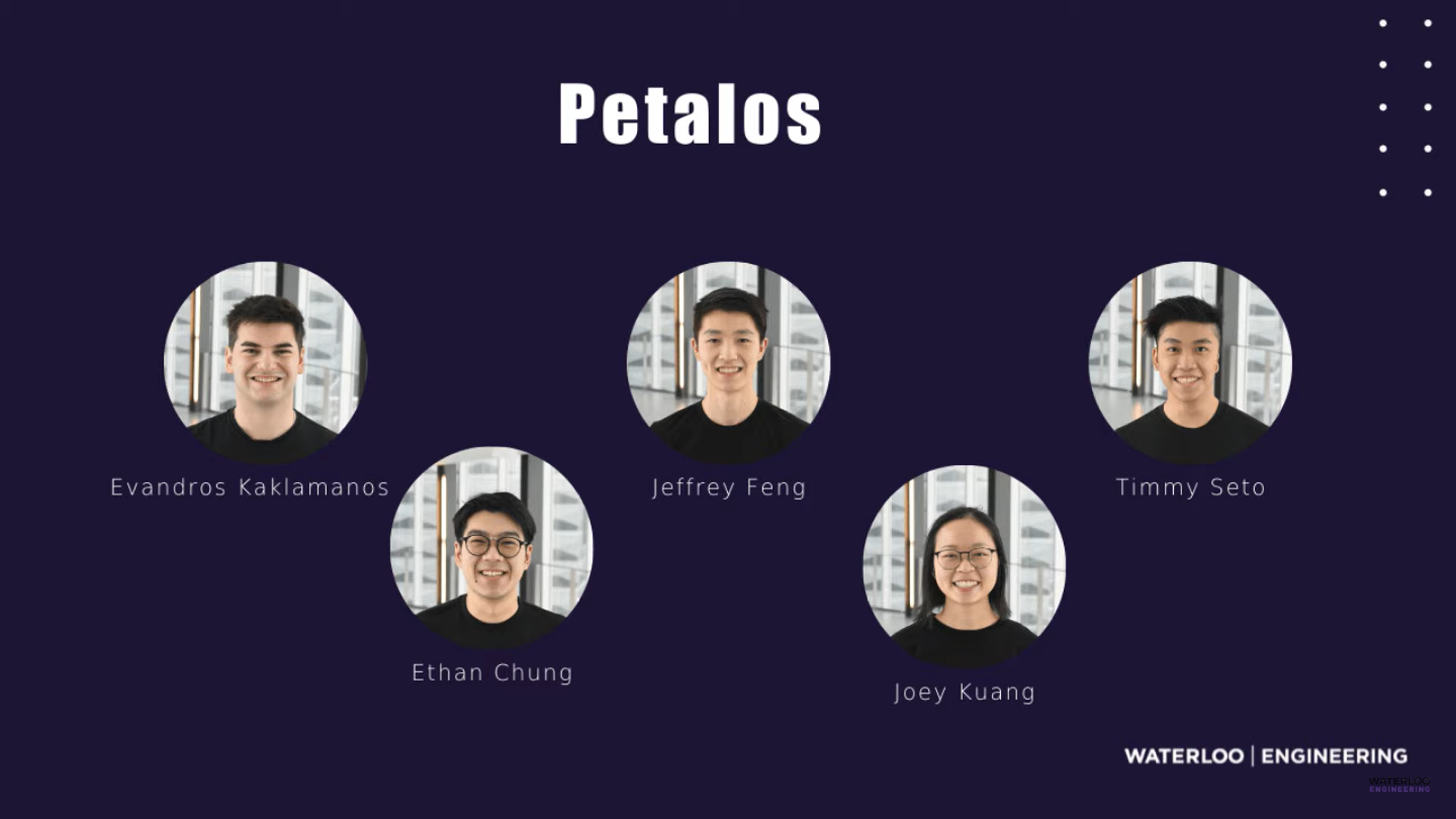
The other winning teams are:
Hydro House (Lucas Godkin, Peter Cornelisse - mechanical engineering)
More than 200,000 Canadians live in remote areas that rely solely on expensive diesel generators for power. To survive in a decarbonized future, these communities require a system that can generate renewable energy.
Team members have developed a plan for the first standalone residential power station that would store surplus solar energy produced during the summer in high-pressure tanks and then convert it back into electricity using a fuel cell during the mostly dark winter months.
"Hydro Houses's mission is to deliver a secure energy future to off-grid residents and capitalize on this market's green energy transition," said Cornelisse.
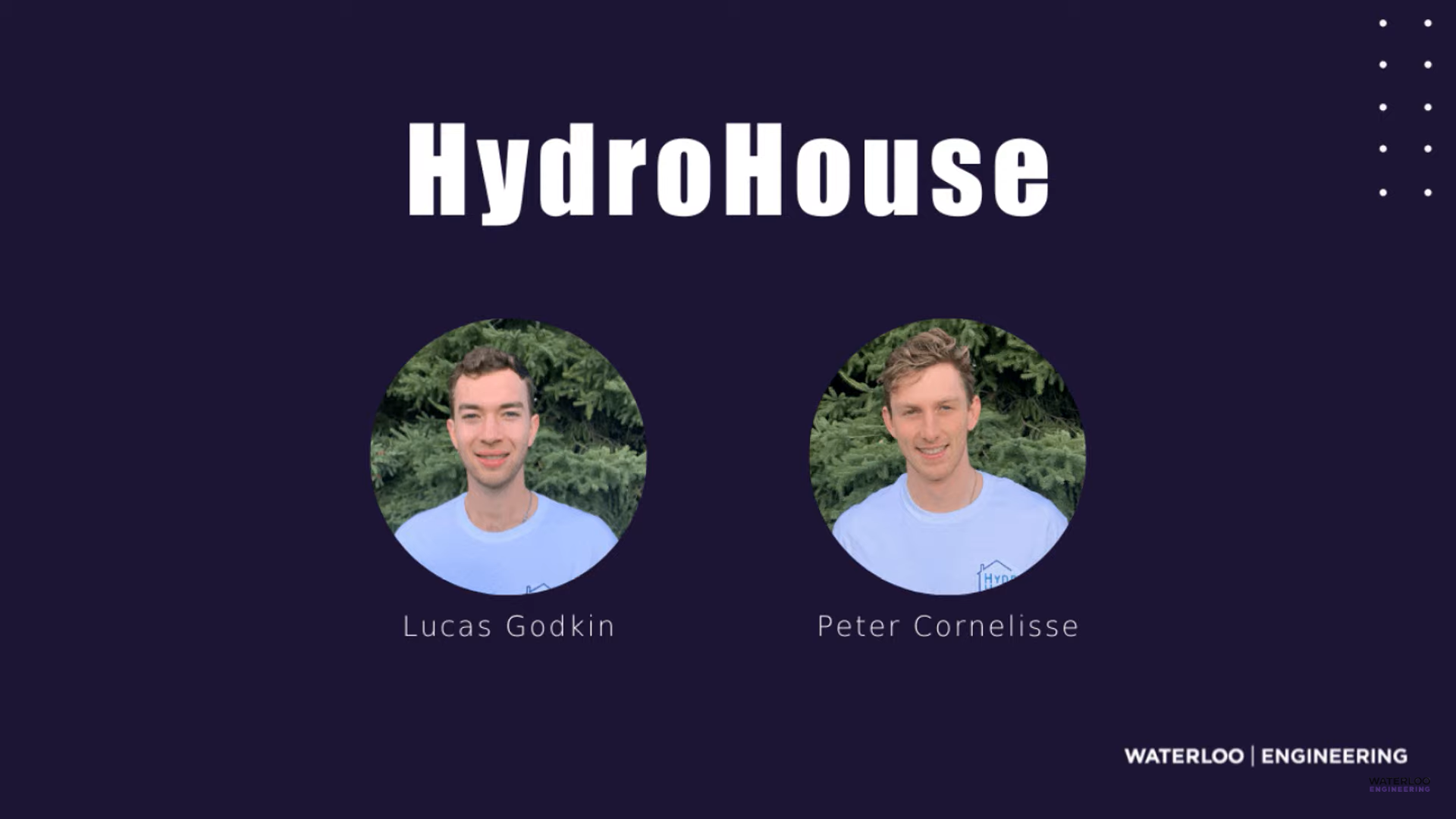
CortiSolve (Jessie Christie, Lisa Devlin, Sarah Odinotski, Simon Frew – nanotechnology engineering)
While mental illness affects one in five Canadians, diagnostic methods remain underdeveloped, Team CortiSolve told the judges.
To support accurate diagnosis of a growing issue, members have designed a cortisol biosensor that is wearable, non-invasive and provides dynamic data.
“This is exactly what researchers need to better understand cortisol’s connection to mental illness and what clinics may need to make more informed diagnoses,” said Odinotski.
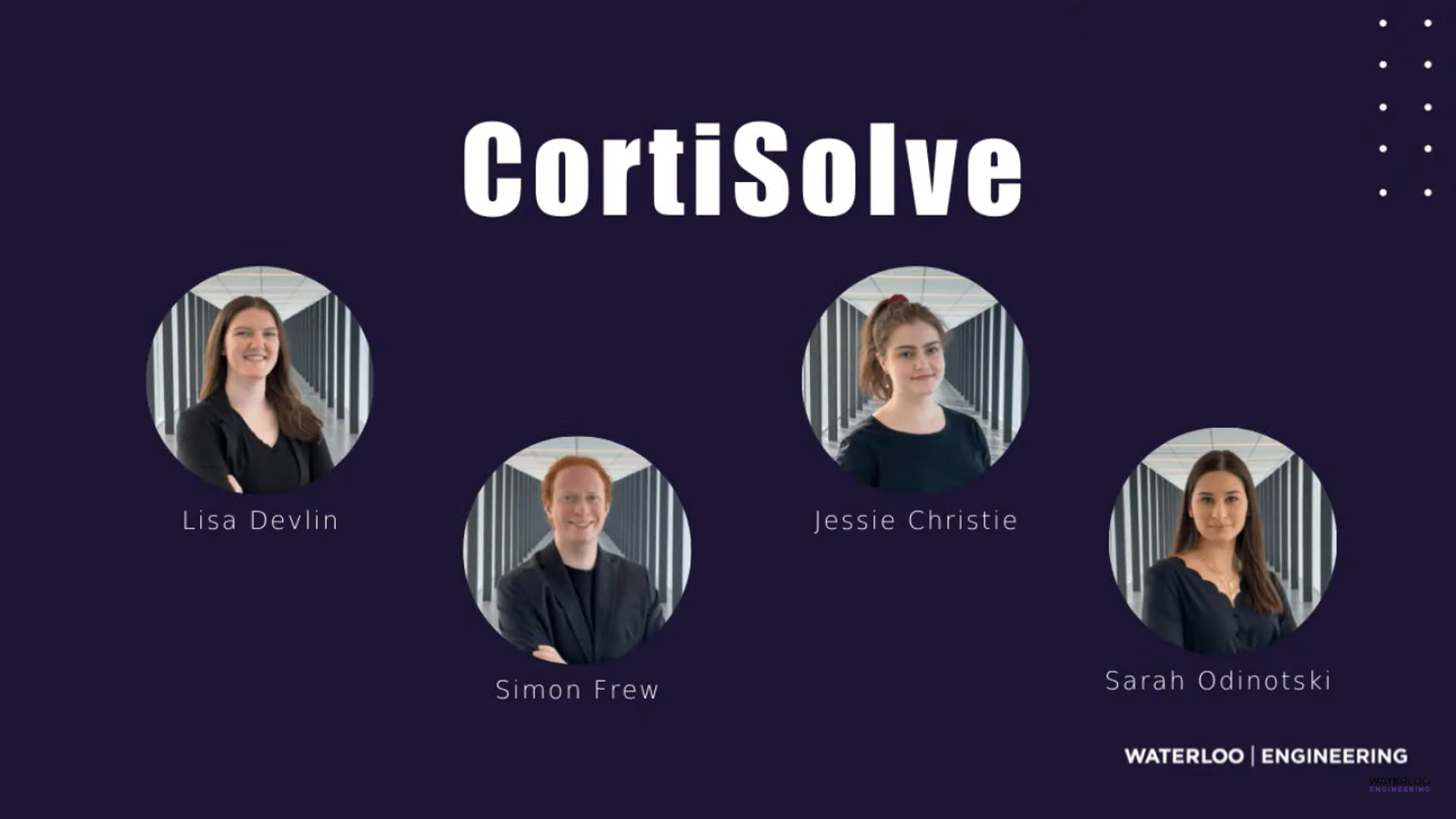
SafeSound Surgery (Yu Chun Fu, Stefan Adamski, Dylon Lemus, Aaron Leger, Marko Popovic and Gianpaolo Pittis – mechanical engineering)
Cancer is the leading cause of death in Canada with a 36.9 9 per cent mortality rate. While traditional surgery remains the most popular treatment plan, it can result in long recovery times and high cancer recurrence rates.
As an alternative, SafeSound Surgery members are developing a robotic-assisted system that identifies, coordinates, and attacks tumours noninvasively using focused ultrasound techniques.
Initially focusing on breast cancer, the team's technology is designed to mitigate human error and minimize surgery time.
“The team has developed a full-scale functioning prototype,” said Pittis. "Testing and validation have begun and we’ve successfully achieved tissue ablation on animal tissue.”
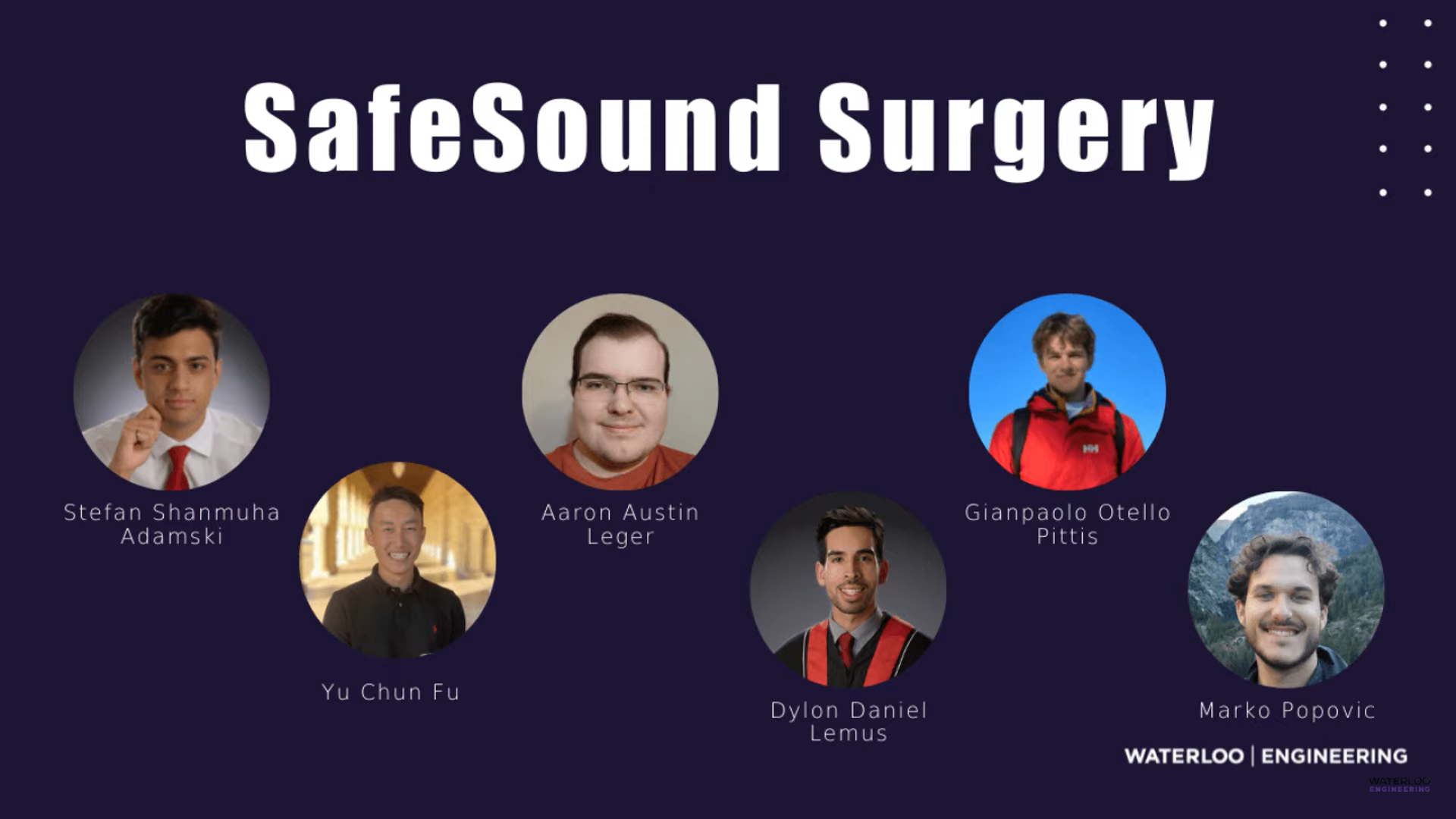
Origam-e (Tyson Norris, Peter Hudlicka, Mahin Masrur, Gurleen Kaloty, Chris Iacobucci – mechanical engineering)
On a mission to revolutionize the electric bike, Origam-e is designing a portable, high-performance and compact model that folds into the size of a backpack and rolls with the ease of a carry-on suitcase.
The team said Origam-e will perform like a full-sized electric bike with a top speed of 40 kilometres per hour.
“We’ve developed a custom drive train featuring dual drive electric motors that can propel Origam-e up steep hills,” said Hudlicka. “Powering all this is a custom Lithium-ion battery pack and a state-of-the-art controller.”
Its novel folding design allows the collapsed bike to be stored under a desk or in a closet, decreasing the risk of theft.
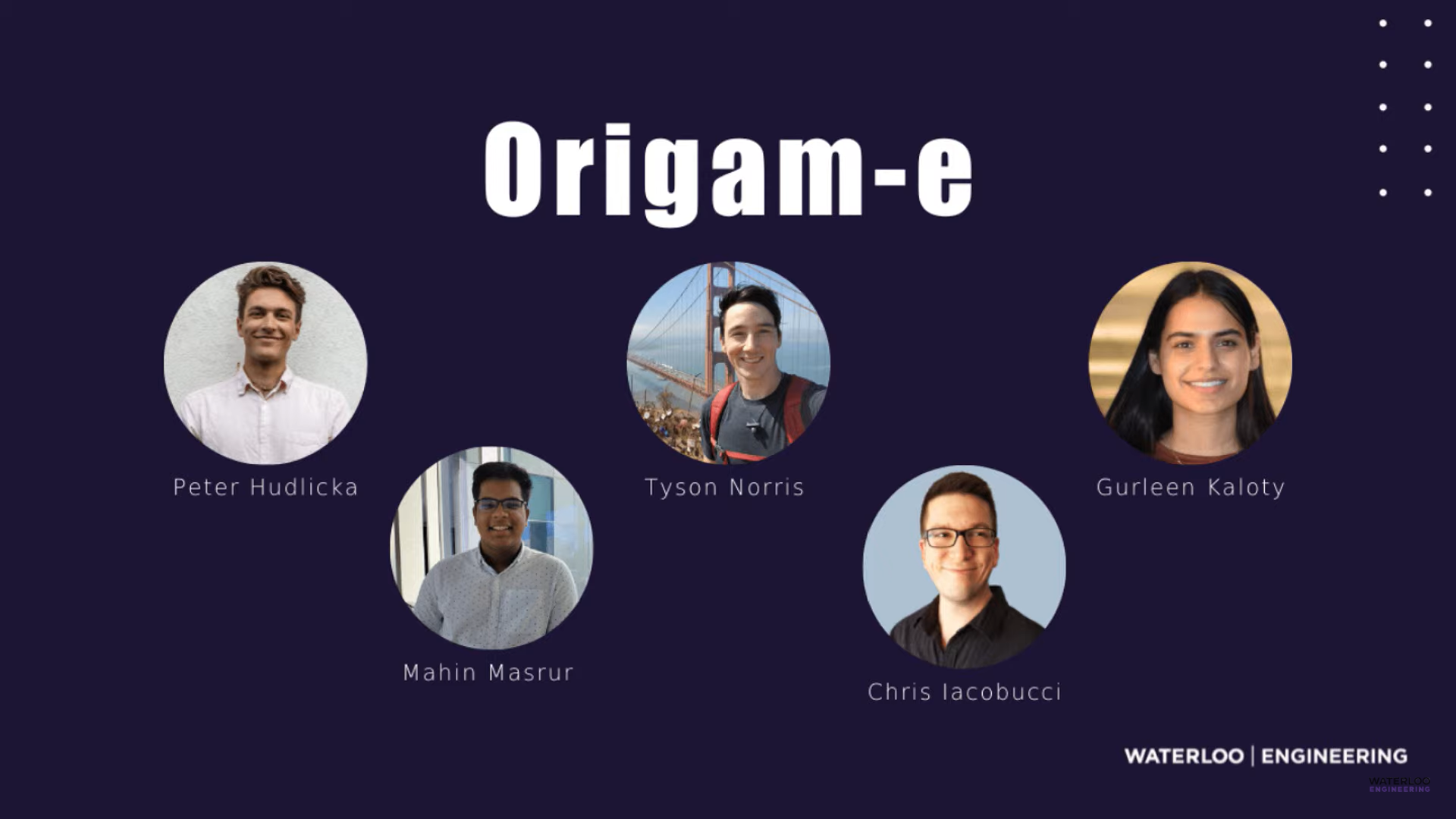
Moonlight Haptics (Yahia Nassab, Alex Wei, Reese Martens, William Losin - nanotechnology engineering)
Recognizing that vision impairment is not only a problem of losing vision but also one of losing choice and independence, team members designed a device that allows users to “see” by mimicking vision through the sense of touch.
The students’ solution includes a slim-fitting pack with a camera hung on the user’s front that live-streams the individual’s surroundings into a haptic image displayed directly onto the user’s skin allowing the person to “feel” any nearby obstacles.
Wei said the team’s current target market is young adults with severe visual impairment who need to travel outdoors for work or hobbies.
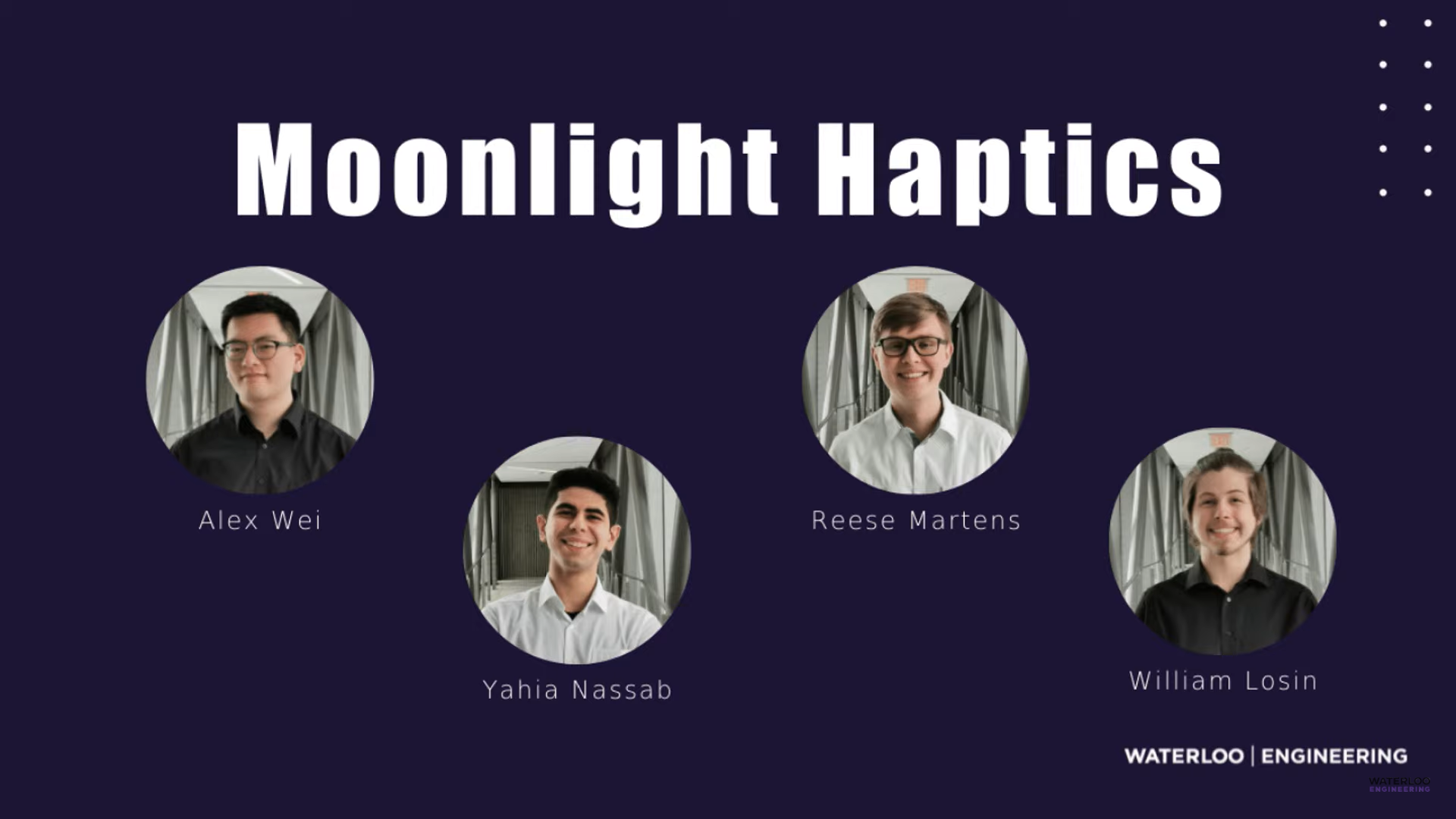
Watch all of this year's pitches for the Norman Esch Entrepreneurship Awards:
And check out all of the 2022 Capstone Design projects by senior-year students:
Civil, Environmental & Geological Engineering

Read more
Here are the people and events behind some of this year’s most compelling Waterloo stories
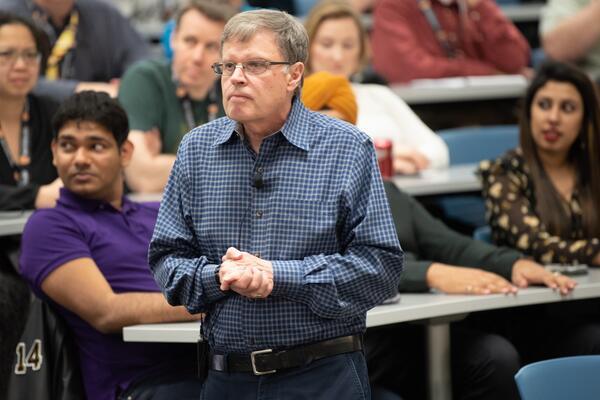
Read more
For more than four decades, Waterloo professor Larry Smith has helped build the University's reputation for innovation and entrepreneurial excellence
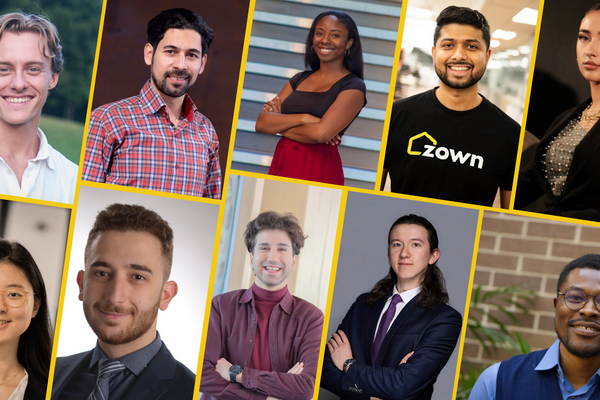
Read more
From transforming solutions for homeownership to advancing health care interventions, Waterloo talent continues to disrupt industries and drive change
The University of Waterloo acknowledges that much of our work takes place on the traditional territory of the Neutral, Anishinaabeg, and Haudenosaunee peoples. Our main campus is situated on the Haldimand Tract, the land granted to the Six Nations that includes six miles on each side of the Grand River. Our active work toward reconciliation takes place across our campuses through research, learning, teaching, and community building, and is co-ordinated within the Office of Indigenous Relations.